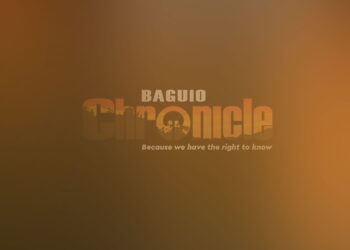Government composed of the townships or rancherias of the District of Benguet under Act 49 with journalist H.P. Whitmarsh who was Civil Governor.
The Baguio rancheria and trade center that was part of Tuba then was named the capital of Benguet. It is now what is known as the central business district consisting of the areas around the city hall, Session Road, the public market, Burnham Park, etc.
Baguio was established as a Charter City On September 1, 1909, but continued to be the capital of Benguet until 1916 when it was cut away from Tuba and became a separate township. Eventually after 1916, La Trinidad became the capital of Benguet.
While the American colonial government issued the charter that made the Baguio central area an extraordinary health resort and recreation center north of Manila, they never planned to isolate the land area from the towns of Benguet from where it was carved out.
The Americans knew that the growth of the new city depended much on the physical, natural, and human resources of the towns surrounding it. In short, Baguio breathed life from Benguet, just like always.
Tax receipts yellowed from the time are proof that the left side of the Loakan Airport runway, facing west, was inside Tuba. Therefore, the land where the Philippine Military Academy now stands is inside Tuba, not within the present Baguio charter land area.
Benguet towns surrounded Baguio so until now I still come across land titles written in Spanish indicating areas inside the present city as within Tuba, Itogon, and La Trinidad.
After the charter, a census had to be piloted so that many of these parts were to be registered with the new city. This was done by simply asking the Ibaloy landowners to register their lands and pay their taxes to the new government to avoid seizure.
Government tax receipts issued before and during the American occupation indicated parts of the old Guisad and Lucban Valleys, Brookside and Aurora Hill up to Pacdal and Upper Ambiong were inside La Trinidad and contiguous with Tuba.
The Americans mentioned a 49 sq. km area that they supposedly included as the land area under the 1909 city charter. Hectares of land were carved out from the townships of Itogon, Tuba, and La Trinidad already existing prior to the 1909 charter. These towns gave economic life to Baguio by providing food, gold, and water supply.
There was no opposition to what the Americans were up to. But slowly, the original people in the area came to understand that the colonizers had to force the charter on this unusually beautiful health resort to make its lands “legally” saleable to land buyers from all over.
Geodetic engineers surveyed the lands in Baguio and drew the subdivision plans before these were sold. Included in the list of lands that were surveyed were sections of the Busol land that were owned by original families who were recognized by the Americans.
Today we find real properties along Leonard Wood Rd, Quezon Hill, Outlook Drive, South Drive, Navy Base, Legarda Rd., Military Cut-Off and many other parts of the city are occupied by vacation houses that are visited by their owners once in a blue moon.
Another reason why the colonizers had to build a city under a charter was to provide health and recreation facilities for their fellow Americans who were exploring gold, silver and copper in the mines around the Baguio area.
As time passed, the lands that were previously within the towns around the city were bought through Townsite Sales Applications by wealthy land speculators from the lowlands and Manila, and people from as far as the Visayas.
Proceeds from the sales of the lands were supposedly collected to pay the salaries of a growing local bureaucracy in the city created by a charter, and to fund the construction of the city hall, roads and government buildings.
Baguio had four appointed American mayors during the city’s formative years. They were E. W. Reynold (September 1, 1909 – February 5, 1910), E. A. Eckman (March 1, 1910 – April 1913), A. D. Williams (May 24, 1913 – May 16, 1918) and C. S. Dandois (June 10, 1918 – December 19, 1919).
Engr. Eusebius Julius Halsema was appointed mayor from February 7, 1920 – May 31, 1937 and was the district engineer of Benguet at the same time until he was replaced by Sergio Bayan, the first Igorot mayor.
His appointment as mayor of the city and concurrent district engineer of Benguet was motivated by the colonial government’s desire to develop a health resort after 109,000 died from a cholera attack from 1902 to 1908 in Manila and other parts of Luzon, and to help construct roads in Benguet that would lead to Baguio’s economic growth.
Engr. EJ Halsema was responsible for constructing the mountain trail from La Trinidad to Bontoc that was named after him. The Halsema Highway in due course was connected to the Bontoc-Banawe road.
The establishment of a city out of a trading center was also very much in connection with the progress and growth of the farms and mining communities within the neighboring towns of Benguet.
As city mayor and provincial district engineer at the same time, it was during Halsema’s term when the Asin hydro-electric plant in Tuba was built to power Pine lumber sawmills that supplied timber to the gold mines, and provide electric power to the government buildings in the city.
Contrary to what appears now, the old city was closest to nature. It was a simple settlement with not too much concrete, no overcrowding, no traffic jams, no unending TSA applications, no serious garbage problems, no leasing of public parks, etc.
Now we have the BLISTT (Baguio, La Trinidad, Itogon, Sablan, Tuba, Tublay). But while the mayors and the residents of these towns in Benguet welcome the progress that BLISTT brings, I am certain that they are opposed to a form of development that will include sharing problems on water shortage, waste disposal, monstrous traffic and land squatting.
The issuance of the Baguio Charter in September 1909 was the day Benguet lands were grabbed wholesale by the American colonial government. A happy Baguio charter anniversary to all!









